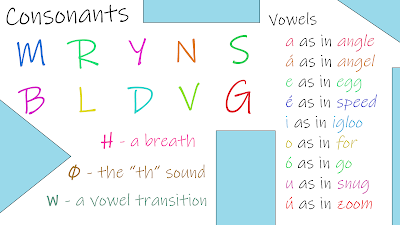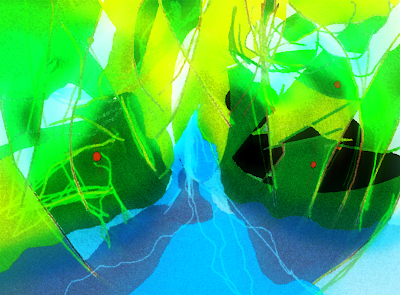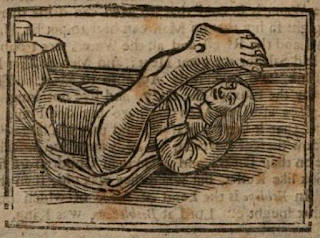Birkhall's Miscellany
Sunday, October 16, 2022
Whistle, Hiss and Shush: The Serpent Eats Its Own Tail
Sunday, August 21, 2022
Journal Notes: August 2022
"[Bruno supported] the opinion of Copernicus that the earth did go round, and the heavens did stand still; whereas in truth it was his own head which rather did run round, and his brains did not stand still"
It is true that in none of his writings - as they have reached us - does Marlowe ever mention a heliocentric universe, while his poetic imagery often contemplates a 'centric' earth and the revolving spheres; none the less, many of his critics have found it surprising and even contradictory that he did not include Copernicanism among his unorthodox and unlicensed opinions.
First century BCE Judaic thought adopted the Hebrew 'place', makom kadosh, as a name of God (Arabic makam 'holy place').
Saturday, July 9, 2022
Buoyant Birds: Why "Bird-Brain" is a "Bird-Brained" Insult
Saturday, July 2, 2022
The Spring
Thursday, February 24, 2022
The Mark of the Beast - A Rational Explanation For Why It's So Prophetic
13:16 And he causeth all, both small and great, rich and poor, free and bond, to receive a mark in their right hand, or in their foreheads: 13:17 And that no man might buy or sell, save he that had the mark, or the name of the beast, or the number of his name.
Wednesday, July 14, 2021
The Voyages and Travels of Sir John Mandevile
"..all that Country was lost through the Folly of a young Man, who had a fair Damsel whom he loved well, and she died suddenly, and was buried in a Tomb of Marble; and for the great Love he had to her, he went one Night to her Tomb, and opened it, and went and lay by her; and a while afterward returned home again; and when it came to the end of Nine Months, a Voice came to him and said in this manner .. Go unto the Tomb of the same Woman thou hast lyen by, open it, and view well that which thou hast begotten on her .. And he went and opened the Tomb, and there flew out a Monster very hideous to see, which flew about the City and Country, and soon after the City and Country sunk down."
"The cause is, forasmuch as a fair Maiden, that was accused wrongfully, for that she had done Fornication, for which Cause she was doomed to die, and to be burnt in that Place, to which she was led. And as the Wood began to burn about her, she made her Prayer to our Lord, as she was not guilty of that thing, that he would help her, that it might be known to all men, and having thus prayed, she entered the fire, and those Branches that were burning became Red Roses, and those that were not kindled became white Roses, and these were the first Roses that any Man ever saw: And so was the Maiden saved thro' the Grace of God, wherefore that Field is called the Field that God flourished; for that it was full of Roses."
"The Saracens [Muslims] also eat neither Geese nor Swines Flesh: For they say, it is Brother to a Man"
"In Ethiope are such Men that have but one Foot, and they go so fast that it is great marvel, and that is a large Foot, for the shadow thereof covereth the Body from Sun or Rain, when they lie on their Backs; and when their Children are first born, they look like Russet, but when they wax old, then they be all black."
".. and Men that dwell near that River are of evil colour, yellow and green."
"There is another Isle that men call Pitan, the men of this land till no Ground, for they eat nothing; and they are small, but not so small as Pigmies. These Men live with the Smell of wild Apples, and when they go far out of the Country they bear Apples with them; for as soon as they lose the Savour of Apples they die"
"And beyond that Valley is a great Isle, where be People as big as Gyants, of 28 Foot long, and have no Cloathing but Beasts Skins that hang on them, they eat no Bread but raw Flesh, and they drink Milk, and have no Houses, and they gladlier eat Man's Flesh than other"
"Another Isle there is Northward, where are many evil and foul Women, but have precious Stones in their Eyes, and have such Force that if they behold any Man with Wrath, they slay him with beholding as the Basilisk doth."
"Another Isle is there, of fairer People and good, where the Custom is such, the first night they are wedded, they take a certain man, that is ordained therefore, and let him lie by their Wives to have their Maidenheads, and they give him a great Reward for his Pains, and those men are called Gadlybrien: For men of that Country hold it a great Thing to make a Woman no maiden: And if it be so that the Husband find her a maiden the next night after [..] the Husband shall complain of him to the Lawyers that he has not done his devoir, and he shall be grievously punished and chastised; but after the first night they keep their Wives well, that they speak not with those men.And I asked what was the Cause why they had that Custom; and they said, heretofore Men lay with their Wives first, and no other, and their Wives had Serpents in their Bodies, and stung their Husbands in the Yard or their Bodies, and so were many Men slain, and therefore they had that Custom to let other Men have their Maidenheads, for fear of death"
Monday, May 17, 2021
Birth Family Tribe Love Sex Apotheosis - Apotheosis/Addendum
When I originally conceived the layout for this book my plan was that there would be no final chapter, and the book would just end with the word 'APOTHEOSIS' in the centre of an otherwise blank page. However, as people reading this blog may now be expecting some kind of final conclusion I think I should probably post something to fill the space (clicking on an empty blog post wouldn't quite have the same feel or impact as turning a nice crisp book page).
My thinking behind such an ending was two-fold. Firstly, the book starts with 'Birth', but I didn't want to end with a chapter titled 'Death'. Aside from the morbidity I felt death was covered in the first chapter - with birth, death and time all forming part of the same conceptual grouping. At least as far as the things I wanted to discuss were concerned.
Then secondly I wanted to convey the sense that humanity is heading somewhere. Where, I don't know, but some sort of ascendency to some destination. Something divine I guess. In fact, my not knowing is the reason why there would be no chapter. Even with my confidence and arrogance I can't claim to know the future. Or to know if there's some higher meaning or purpose for humanity. I can't describe indescribable God. If indeed there is a God, or something approximating to that notion.
It's simply beyond me.
What I did try to illuminate in the book though is that the many dualities or dichotomies we see in life are things that are equally needed by humanity. That is, that both aspects of these dichotomies are needed. Just as a bird needs its two wings to fly.
Be it left/right politics, cyclic and linear time, tribe vs inter-tribe, or dualities of sex and gender. It's not that one side is good and the other bad, but that both can be explored. We often see ourselves as left wing or right wing, as this or that. However, these spectrums are things that we ourselves can move around on. At least intellectually. We don't have to pin ourselves down to the map, we can explore the whole territory. Taking flight in the process.
In fact, society as a whole, with its arguing factions pushing back and forth, is not unlike a single organism thinking its way through a problem. Contemplating within itself, deciding a course of action. Repeatedly rising and crashing like a phoenix as it gets the balance better or worse.
An Icarus aiming for the Sun of apotheosis, burning its wings. Like me earlier, daring to think I can know the unknowable.
Perhaps if we learn to understand these dichotomies better as individuals we can become better pilots of the bird. Guiding ourselves and wider society towards the light, even if we can't descry the destination.












